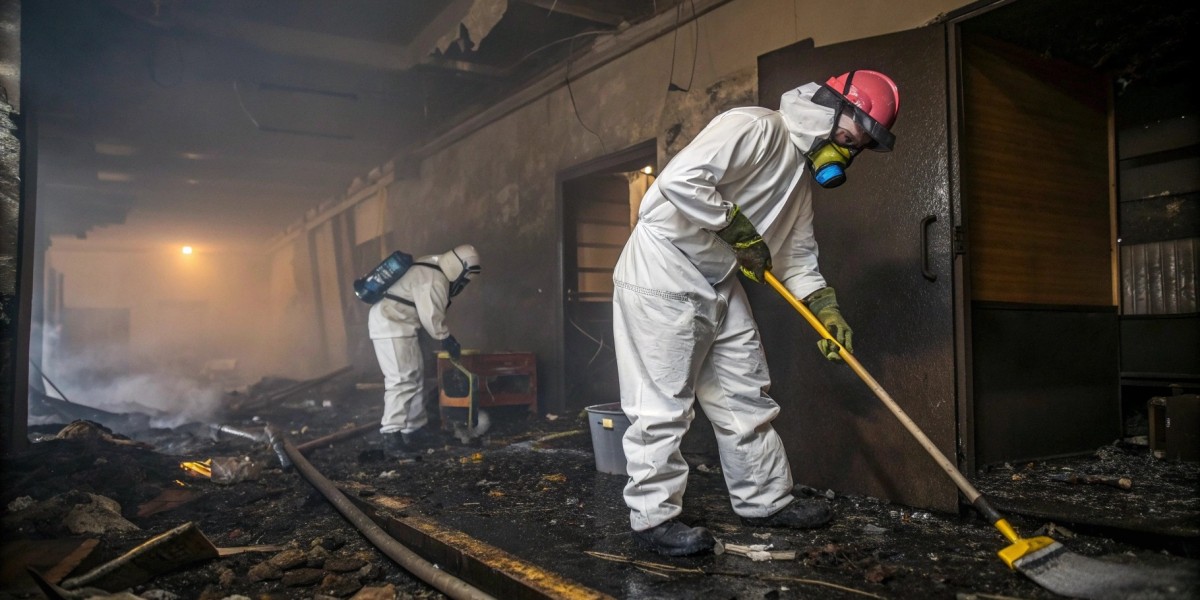Summary
Fire damage poses serious risks beyond visible destruction, including smoke, soot, and lingering odors that can threaten health and structural integrity. While homeowners may attempt DIY cleanup, professional fire restoration experts use specialized equipment such as thermal foggers, air scrubbers with HEPA filters, ozone and hydroxyl generators, industrial-grade drying machines, soot-specific cleaning tools, moisture and smoke detection devices, and full protective gear that homeowners cannot safely access or operate. These tools allow professionals to thoroughly remove odors, toxins, and moisture, prevent mold growth, and restore homes efficiently and safely, highlighting why professional cleanup is essential for protecting both property and health.
-
Introduction
Fire damage is devastating. Beyond the obvious destruction of property, smoke, soot, and lingering odors can create long-term health hazards if not properly addressed. While homeowners may attempt to clean up minor fire damage themselves, professional Fire restoration specialists have access to specialized equipment that makes the process faster, safer, and more effective. In this blog, we’ll explore the tools and technology that set fire restoration professionals apart from DIY approaches.
Why Professional Equipment Matters
Professional equipment matters because fire damage is not just visible destruction; it involves smoke, soot, water, and chemical residues that can linger long after the flames are gone. Using the right tools ensures thorough cleaning, faster restoration, and reduced risk of long-term structural or health issues. Fire cleanup experts rely on specialized machines and detection devices that homeowners simply cannot access, such as thermal foggers, industrial dehumidifiers, and air scrubbers with HEPA filtration. Without this professional-grade equipment, attempts at cleanup can be ineffective, potentially spreading contaminants, worsening odors, or leaving hidden moisture that leads to mold. Ultimately, having the proper tools is what allows experts to restore homes safely, efficiently, and completely.
1. Thermal Foggers
One of the most common issues after a fire is the smoke odor. It can seep deep into walls, fabrics, and furniture. Fire restoration specialists use thermal foggers, which heat a deodorizing solution into a smoke-like vapor that penetrates surfaces and neutralizes odors at a molecular level.
Homeowners generally cannot purchase or safely operate this equipment due to the chemicals involved and the precise calibration needed for effective results.
2. Air Scrubbers with HEPA Filtration
Smoke and soot particles are extremely fine and can linger in the air long after a fire. Fire restoration professionals use air scrubbers with HEPA filters to remove these microscopic particles.
These machines pull air through multiple layers of filtration, trapping soot, ash, and other contaminants. Regular household air purifiers simply don’t have the capacity or filtration strength to handle post-fire environments.
3. Ozone Machines
Persistent smoke odors often require treatment with ozone machines. Ozone is a powerful oxidizer that breaks down odor-causing molecules. Restoration experts carefully control ozone concentration and exposure time to avoid damaging property, something that is risky for an untrained homeowner.
4. Hydroxyl Generators
An alternative to ozone treatment, hydroxyl generators are safe to use in occupied spaces but require professional expertise to operate effectively. These machines release hydroxyl radicals, which neutralize smoke and chemical odors without leaving harmful residues.
5. Industrial-Grade Drying Equipment
Fires often involve water from sprinklers or firefighting efforts, which can lead to secondary water damage. Professionals use industrial air movers and dehumidifiers to dry out structures quickly and prevent mold growth.
These units are far more powerful than standard consumer-grade fans or dehumidifiers, allowing for efficient moisture removal from walls, floors, and ceilings.
6. Specialized Cleaning Agents and Soot Removal Tools
Soot is acidic and can corrode metals, plastics, and even painted surfaces. Fire restoration specialists use commercial-grade cleaning agents, brushes, and vacuums specifically designed to handle soot and ash.
Attempting to clean soot with household cleaners can smear the residue and make odors worse. Professionals know exactly which chemicals and techniques work best for different materials.
7. Moisture and Smoke Detection Devices
Before cleanup begins, experts assess the full extent of damage using thermal imaging cameras and moisture meters. These tools detect hidden pockets of water, heat, and smoke residues that are invisible to the naked eye. This ensures no hidden damage leads to long-term structural problems or mold growth.
8. Personal Protective Equipment (PPE)
Finally, safety is paramount. Fire restoration specialists wear respirators, chemical-resistant suits, gloves, and eye protection to guard against hazardous smoke, chemicals, and soot. Homeowners attempting cleanup without proper PPE risk respiratory problems and chemical exposure.
Final thoughts
When dealing with the aftermath of a fire, having access to the right tools can make all the difference in restoring a home safely and effectively. Fire cleanup and restoration require specialized equipment that goes far beyond what a typical homeowner can use, from thermal foggers and ozone machines to industrial drying systems and advanced detection devices. These tools not only remove smoke, soot, and odors but also prevent long-term damage and health risks, ensuring the home is thoroughly restored. Using professional-grade equipment is essential to handle the complexity and hazards of fire damage, making the restoration process both efficient and safe.







